Lovage Herb: Why this Old-Fashioned Herb Is Making a Comeback
Medicinal herbsMeet Lovage (Levisticum officinale), an old-fashioned herb that just might be new to you! This perennial plant is easy to grow. With a strong celery flavor and medicinal benefits, lovage plants can be a welcome part of your herb garden.

Lovage has been used for a long time in Europe for food and medicinal reasons -- as far back as Greek and Roman civilizations. Today, this useful plant is making a comeback in the United States. The perennial herb is a cousin of parsley but tastes more like celery. The easy-to-grow, fuss-free plant grows up to 6 feet tall and about half as wide.
Health Benefits of Lovage
This useful herb boasts some really impressive benefits. All parts of this beautiful plant are useful, from tip to root.
- High in quercetin, Vitamin C, and B-vitamins - Like all green leafies, lovage is packed with nutrition.
- UTIs & kidney health - Lovage is a natural diuretic that boosts urination without electrolyte loss. This system flush can keep things healthy and moving.
- Stomach complaints & appetite - Lovage tea can calm the nervous and digestive systems, which may help to restore appetite.
- Arthritis & joint relief - The anti-inflammatory effects of lovage can help support healthy joints and subtly improve pain.
- Menstrual complaints - Lovage has been used to alleviate cramps, bloating, and other monthly irritations. The nutrient-dense nature of the plant can help with cravings, too.
- Skin benefits - A lovage ointment can be a salve for smoothing skin, improving tone and appearance, and providing better blood flow.
- Allergies & colds- The high quercetin levels of lovage produce a natural antihistamine effect. Try adding some to soups when you’re feeling under the weather!
Because of its diuretic properties, pregnant women and people with heart or kidney disease should avoid using lovage. Overeating lovage can cause diarrhea, so stick to reasonable amounts. In addition, lovage can make your skin a bit more photosensitive. Protect your skin, no matter what foods you’re eating, but take special care to use sunblock or cover up when eating or consuming lovage.
How to Grow Lovage from Seed

Lovage Seed Germination Tips
Direct sow lovage seeds outside in fall or late spring, or sow seeds indoors 6-8 weeks before the last frost date.
Plant seeds 1/4 inch deep.
For indoor seeds, maintain a steady soil temperature of 60°F.
Keep the soil moist until the seeds sprout in 10 to 14 days.
Water seedlings when almost dry, taking care not to get the leaves wet.
Lovage seedlings started indoors can be transplanted outdoors once they are mature enough. Seedlings should be several inches tall and have more than two true leaves. Take time to harden them off before transplanting.
Cultivate the soil deeply to accommodate the long taproot. You can add well-rotted compost before planting.
Space plants 2 to 3 feet apart to allow them room to grow.

Caring for Lovage Plants
Lovage is an easy-growing perennial. It doesn't take much care and can grow to 6 feet tall and 3 feet wide. The leaves will die back in winter, but the roots are cold hardy to -5ºF. New growth will appear when the weather warms up in spring.
Sun
Lovage plants thrive in partial shade to full sun.
Soil
Lovage plants can tolerate a variety of soils as long as the roots aren't waterlogged. Add compost in the spring to keep the soil fertile.
Water
Once they are established, lovage plants have long tap roots. Keep them well watered without letting them dry out completely.

Harvesting Lovage
All parts of the lovage plant are edible, and young leaves can be harvested in spring.
You can cut off a few leaves at a time or cut whole stalks off.
By mid-summer, lovage plants can be 6 feet tall if they haven't been trimmed.
The plants will produce yellow flowers that attract pollinators.
Once the plant has started flowering, the flavor will be a little more bitter.
You can cut back the plant at any time to encourage new growth.
Lovage seeds are also edible. Let the plants flower and go to seed to harvest seeds. These can be used in place of celery seed or caraway.
After the plant goes to seed, it will die back in the fall or early winter and regrow in the spring.

How to Use Lovage
This delicious old-fashioned herb tastes a lot like celery, with some hints of yeast, parsley, and mild anise or licorice flavors. Some cooks use lovage in place of celery, while others find it to be too strong. So start with just a few leaves to see how the flavor works in your recipe.
- The leaves and stems add something special to your soups and salads, raw or cooked.
- Use it anywhere you’d use parsley, dill, or other green leafy herbs.
- The roots can be eaten as a vegetable or grated into salads.
- Seeds may be sprinkled whole or ground up as a spice for seasoning.
- A soothing tea can be made from the dried herbs and roots of lovage.

Lovage FAQs
Can you grow lovage in containers?
You can grow lovage in pots, but it can get to be a very large plant. Choose a container that drains well and is large enough to accommodate the large plant and long tap root.
Can you eat raw lovage?
Lovage leaves can be eaten raw, although they are most commonly used in cooked dishes.
Does lovage come back every year?
Lovage is a perennial herb that is winter hardy to -5F. As long the roots are healthy, it will come back in spring.
There’s plenty to love about Lovage. We’re excited that this traditional, country herb is making a comeback. Grow a few plants in your yard and find out for yourself. Lovage is easy to start, grow, and maintain. You’ll be treated to an abundance of healthy, delicious herbs year after year.
Written by Teresa Chandler




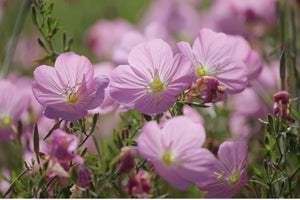
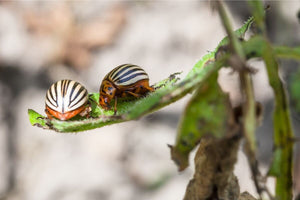
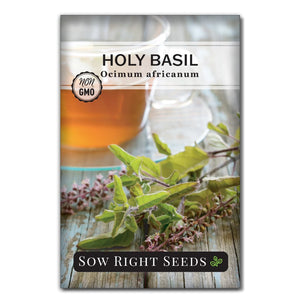
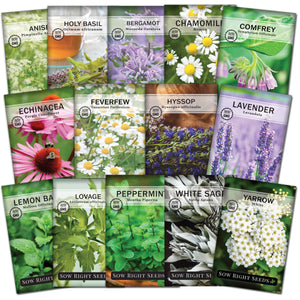
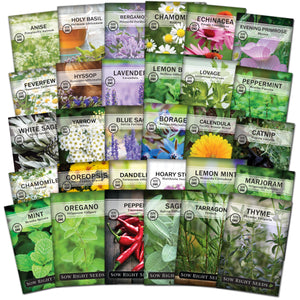

Leave a comment